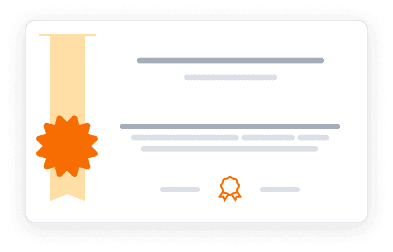Manage infrastructure risks, assess feasibility, and use indicators to prioritize investments effectively.
Manage infrastructure risks, assess feasibility, and use indicators to prioritize investments effectively.
This course teaches you how to effectively manage disaster risks in infrastructure projects. You'll learn to assess the technical and economic feasibility of projects, as well as prioritize investments using quantitative indicators and their calculation methods. The program delves into the concepts of efficiency and equity, and how to properly incorporate them into risk analysis. The course also addresses the key components of risk governance, including the necessary steps to implement an informed public investment system. Through case studies and real examples, you'll understand how to operationalize risk analysis in the infrastructure project lifecycle. Aimed at professionals interested in risk management, project planning, and climate change adaptation, this course is especially valuable for those working in the government sector, non-governmental organizations, or private industry.
Instructors:
Spanish
Not specified
What you'll learn
Identify the concepts of technical and economic feasibility of infrastructure projects Distinguish the different existing quantitative indicators to prioritize investments and their calculation Integrate principles of efficiency and equity in risk analysis Identify the key components of risk governance Learn the steps to implement an informed public investment system Apply practical methodologies for risk analysis in projects
Skills you'll gain
This course includes:
58 Minutes PreRecorded video
6 assignments
Access on Mobile, Tablet, Desktop
FullTime access
Shareable certificate
Get a Completion Certificate
Share your certificate with prospective employers and your professional network on LinkedIn.
Created by
Provided by

Top companies offer this course to their employees
Top companies provide this course to enhance their employees' skills, ensuring they excel in handling complex projects and drive organizational success.





There are 2 modules in this course
This course addresses disaster risk management in infrastructure projects from a comprehensive approach. The first part focuses on the technical and economic feasibility of projects, analyzing how to prioritize investments through quantitative indicators and incorporating efficiency and equity concepts. Students learn to perform cost-benefit analysis with risk reduction criteria and make informed decisions in infrastructure projects. The second part delves into governance and operationalization of risk analysis, exploring the conceptual framework of disaster risk governance, key elements of national public investment systems, and specific methodologies such as that used by the IDB. The course includes practical cases that allow students to apply the knowledge acquired.
Semana 1
Module 1 · 3 Hours to complete
Semana 2
Module 2 · 2 Hours to complete
Fee Structure
Instructors
Head of the IDB's Corporate and Operational Learning Group
A Colombian national, she holds a Master's Degree in Finance from the Universidad de los Andes and a certification in Project Management from the Project Management Institute. With over 18 years of experience, she has worked across the private, public, and development sectors. Her primary areas of expertise include implementing complex economic and social development projects, as well as designing and executing learning programs centered on project management.
Distinguished Disaster Risk Management Expert and Policy Innovator
Sergio Lacambra serves as Principal Specialist in Disaster Risk Management at the Inter-American Development Bank, bringing 25 years of experience in Latin America and the Caribbean. After earning his Master's in Economics from the University of London, Erasmus Diploma from the University of Bristol, and Economics Degree from the University of Zaragoza, he has led numerous policy-based and investment loans across the region. As coordinator of the Disaster Risk Management Cluster, he oversees natural disasters contingent credit facilities in multiple countries and led the development of the Index of Governance and Public Policy in Disaster Risk Management (iGOPP). His career includes managing European Union humanitarian aid operations in Central and South America, serving as National Director for Action Aid in Honduras, and working as an environmental economist in the Brazilian Amazon. Through his co-authorship of the Bank's disaster risk screening methodology for infrastructure projects, he continues to advance resilience in development initiatives.
Testimonials
Testimonials and success stories are a testament to the quality of this program and its impact on your career and learning journey. Be the first to help others make an informed decision by sharing your review of the course.
Frequently asked questions
Below are some of the most commonly asked questions about this course. We aim to provide clear and concise answers to help you better understand the course content, structure, and any other relevant information. If you have any additional questions or if your question is not listed here, please don't hesitate to reach out to our support team for further assistance.





